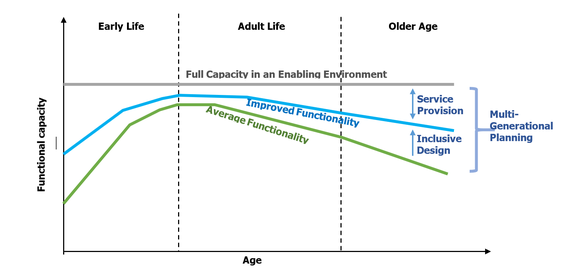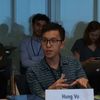Current conversations and dialogues relating to sustainable development are often congested with variations of words relating to the environment. Phrases such as "green energy", "green technology", "green solutions" or "environmentally-friendly", have permeated global dialogues on sustainability and are often seen in conjunction with references to climate change. While these lexical variations and their ideals are at the root of this new age of sustainable development, they do a true disservice to what sustainability is really about: making smart choices that efficiently uses available resources, while maximizing public well-being at all levels.
By limiting or narrowing our understanding of sustainable development to simply include the environment, we are simultaneously removing the narrative of urgency from other sustainability-related endeavors that do not fit our traditional paradigms.
Around the United States, municipalities are confronted with the "dual challenge" of providing for a quickly aging population and for families with young children. By 2030, roughly a fifth of the U.S. population will be 65 years of age or older, and this share of the senior population will only double from 40 million in 2010 to 80 million in 2040. This poses particular planning and governance challenges that work in tandem with special opportunities afforded by immigration to offset the United States' declining birthrate.
To capitalize on the social and economic advantages of an increasingly diverse younger population, planning policies and programs will have to expand investments for children and youth in order to reap the 'demographic dividend' provided by immigration -- dividend which "renews our population, and provides for a robust foundation of younger people on which the future of the country rests."
According to Mildred Warner of Cornell University, better integrated planning and service provision for both of these populations are prerequisites to reconcile the financial constrains posed by fiscal austerity. In addition to financial benefits, new findings suggest that "intergenerational programming can improve outcomes for children and seniors alike". This research on multigenerational planning represents a project that one would not instantly recognize as a sustainability-related project, yet upon closer inspection, the concept of planning across generations represents an ideal that is at the heart of sustainable development.
Links between design and service
 Source: Mildred Warner, et al 2013. Overview: Planning for Multigenerational Communities, Dept of City and Regional Planning, Cornell University, Ithaca, NY http://cms.mildredwarner.org/p/181
Source: Mildred Warner, et al 2013. Overview: Planning for Multigenerational Communities, Dept of City and Regional Planning, Cornell University, Ithaca, NY http://cms.mildredwarner.org/p/181
To return to the Brundtland Commission's definition of sustainable development in their 1987 report, Our Common Future, sustainable development is "development that meets the needs of the present without compromising the ability of future generations to meet their own needs." The United Nations extrapolated upon this by classifying three pillars of sustainable development: social, economic, and environmental sustainability. Similarly, these categories should not be seen independent of the others but as an interdependent whole.
Research by Warner emphasizes two important pillars of sustainable development: economic and social sustainability. In order for United States to overcome the negative effects of a declining birthrate and prosper economically, it has to secure strong immigration policies. And while immigration is beginning to be recognized as economically advantageous, it is also important to recognize its significance in tandem with conversations relating to sustainability.
Only a strong social and economic landscape can support an ambitious environmental policy framework conducive to sustainable development.
Understanding these various nuances, UN-Habitat has taken a proactive leadership role by exploring these topics through a foray of 28 "Urban Thinkers Campus" organized by the World Urban Campaign. Titled "Urban Citizenship in a Nomadic World", this upcoming Urban Thinkers Campus in Mannheim, Germany, will explore the social and economic component of sustainability by focusing on refugees, migrants, and others in their transitional stages, as they relate to sustainable urban development.
Because of the intricacies of sustainability, it would be a mistake to simply zoom in on the environment and overlook other dimensions that support, sustain and reinforce the landscape necessary to secure sustainable development. As such, we should begin to re-orient our thinking to critically engage in topics that have traditionally been on the periphery of sustainable development, including the role of migrants and refugees in development, and give them similar levels of urgency. To ignore the multifaceted dimensions of sustainable development would be to misunderstand or misconstrue what that these two words truly mean.
